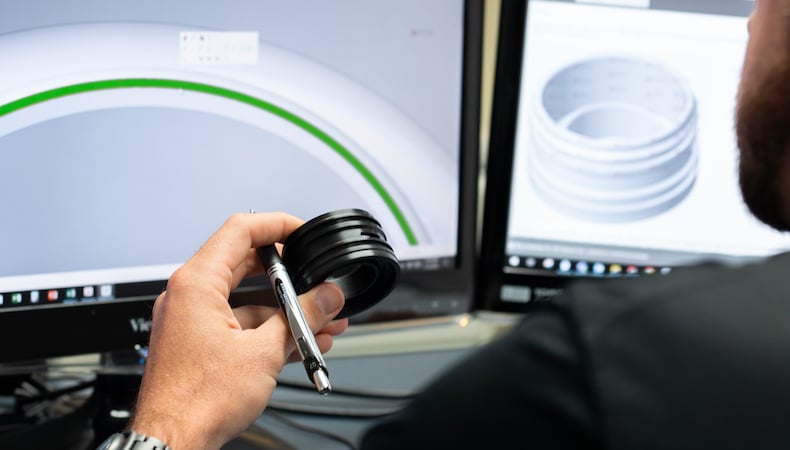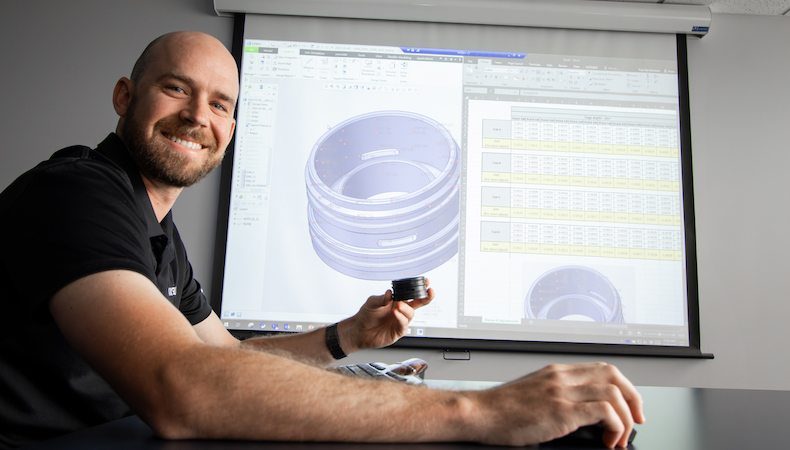How Overmolding Adds Value and Versatility to Plastic Components

The more OEMs learn about plastic overmolding, the more they want to use this injection molding process to solve application-specific challenges ranging from soft-touch or stylish consumer products to field-use devices that require extra protection and user-friendly features. Not only does overmolding improve functionality, performance, and aesthetics, it lowers total production costs — which is pretty rare these days.
What is Overmolding?
Overmolding is the ultimate in multi-material injection molding. It seamlessly combines multiple materials into one part or product by using advanced multi-barrel injection molding machines to inject several materials into the same mold during a single, automated operation. A rigid, plastic base component (or substrate) is covered with a thin layer of thermoplastic elastomer (TPE) for a soft, comfortable, non-slip grip that is popular on products like toothbrushes, tool handles, and portable devices.
overmolding value-adds
In addition to injection molding process simplification, overmolding adds value in ways that consumers look for and demand in the products they purchase:
- Reduced shock and vibration
- Dampened sound
- Electrical insulation
- Enhanced chemical/UV resistance
- Effective oxygen and/or moisture barriers
- A wide range of colorful, visually appealing exteriors
For OEMs, overmolding is a practical way to reduce production costs since it:
- Eliminates traditional injection molding process steps required for assembling individual parts
- Creates such a tight substrate-TPE bond that downstream finishing operations such as priming, painting, and coating aren't needed
- Improves product quality and throughput while reducing waste
In conjunction with saving money, overmolding typically saves time — that means products get to market faster, creating valuable competitive advantages for OEMs.
Not Every Injection Molder is an Overmolder
Not every injection molder can overmold. It requires specialized equipment, extensive training, and precise control of multiple variables throughout the production run. Even the slightest variations can affect quality, so experienced engineers, technicians, and operators are essential to establish injection molding process parameters and production design, as well as monitor in-tool conditions during overmolding.
Overmolding engineers must have a thorough knowledge of:
- Material selection and chemistry, and how different types of TPE and substrates interact under varying pressure and temperature conditions — deep knowledge that continuously expands as suppliers develop new blends with expanded characteristics such as chemical resistance, UV resistance, hardness, scratch resistance, clarity, heat resistance and UL standards. Kaysun Corporation, for example, has a vast material science database accumulated over hundreds of projects, and our engineers stay on top of the latest developments in new materials to remain responsive to any product development request.
- TPE melt temperatures, friction coefficient, and bondability, as these properties directly impact the tactile quality of overmolded products — the "touch" or "feel" that is often identified as the greatest benefit of overmolding.
- Prototyping carefully designed, highly precise tools that can apply the ideal combination of pressure and speed to fill tool cavities and overmold the substrate without changing the substrate's position in the tool or creating wasteful TPE overflow. Prototyping ensures maximum product performance and manufacturability, especially when accomplished in the earliest stages of product design and development. It is the most efficient way to define processes and minimize redesign, which saves OEMs a substantial amount of money.
Given the amount of expertise and scientific knowledge required by injection molding engineers and designers, it's understandable that not every molder is able to provide plastic overmolding. However, OEMs that align themselves with injection molding partners that have these specialized capabilities will enjoy the full benefits of overmolding, including quality, appealing products manufactured at lower costs.
To better understand the benefits, options, and versatility overmolding provides — and how Kaysun distinguishes itself as a premier overmolding partner — read our white paper, Overmolding Fundamentals for OEMS. Click the button below to get your copy now!
Subscribe
TO OUR BLOG

How Do Injection Molder Partnerships Influence Project Costs?
You Might Also Like...

How RJG Master Molder I/II Defines Injection Molding Excellence
In custom injection molding, quality and precision are both an expectation and a g…
READ MORE

5 Engineering Factors That Improve Your Injection Molding Project
In many complex industries, decisions about which injection molder to use for cust…
READ MORE

Why Continuing Plastic Engineering Education Matters to OEMs
Technologies, product needs, and customer expectations are rapidly advancing. OEMs…
READ MORE
